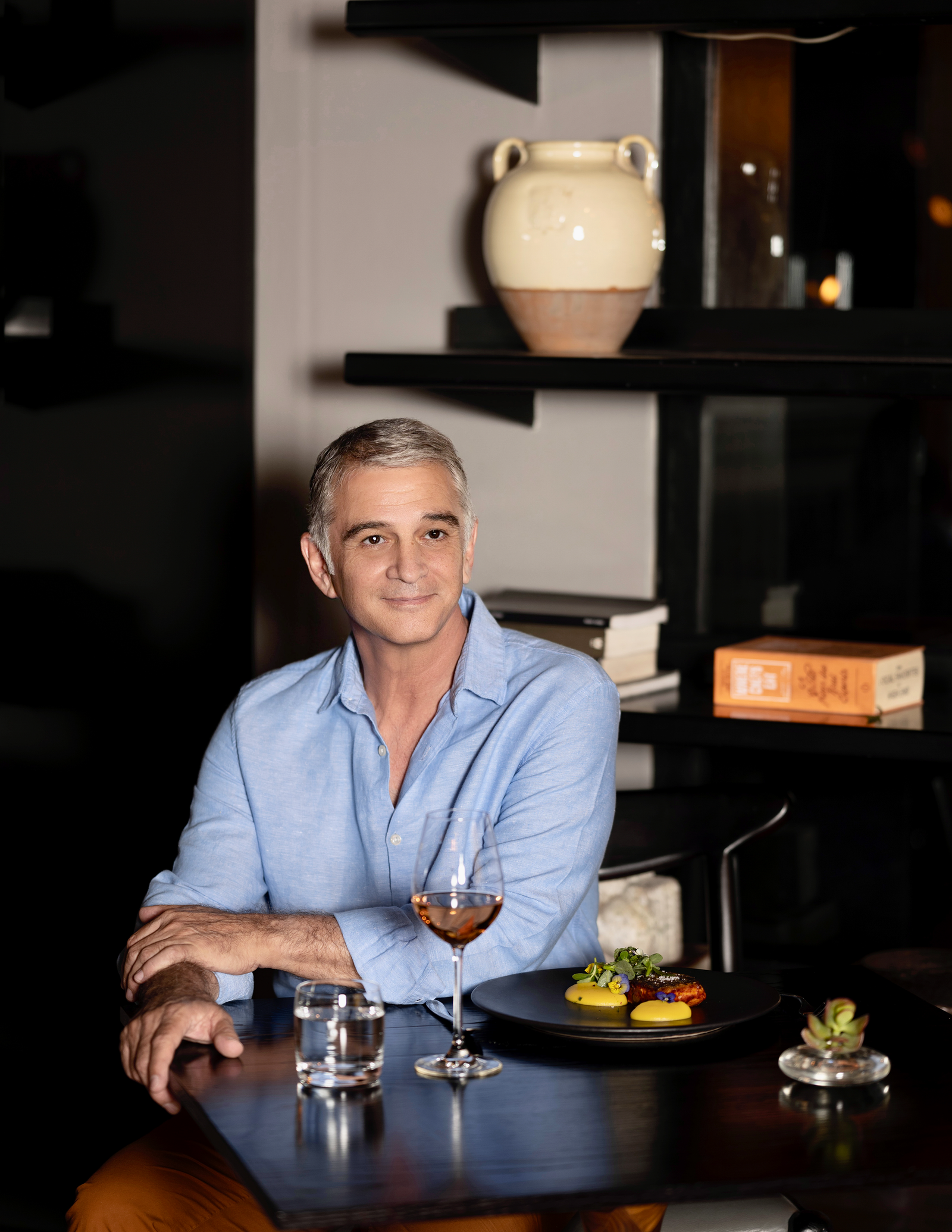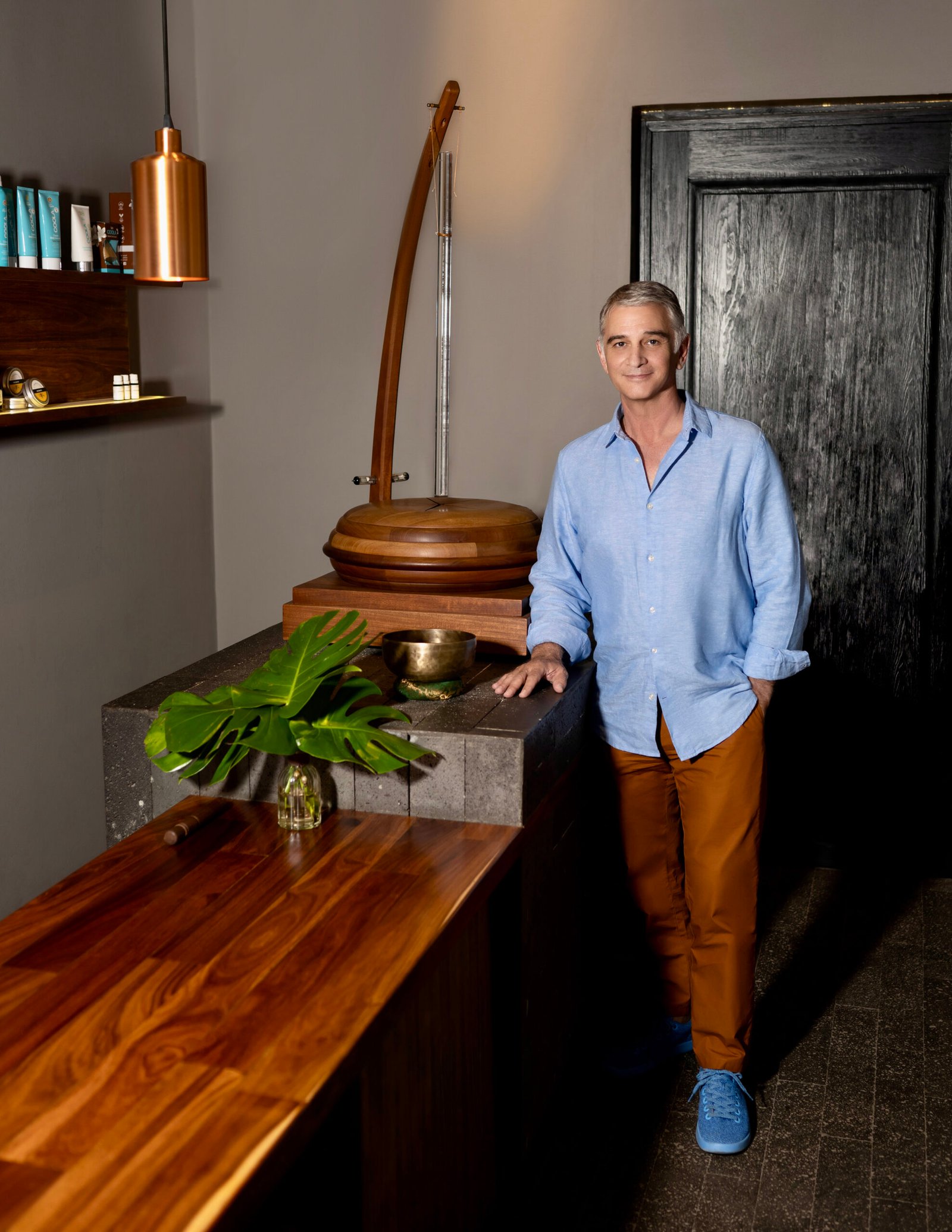Alberto Laposse
Designer, Architect, Baker, Manager, Developer, Financier, Hotelier, Art Collector:
“I miss baking. I am dying to put on an apron again”
Heide VanDoren Betz for Luxury Trending
Heide Betz: Please tell us a bit about your background: you stem from generations of Italian bakers and studied the fine art of making pastries in Paris.
Alberto Laposse: My Italian grandfather, Giovanni Laposse, arrived in Mexico City in 1901. He began working at El Globo, then a tea and pastries parlor. After the Mexican revolution he reopened El Globo under his name. My father and uncles managed El Globo, then one moved to Paris in 1983. In 1985 my father passed, so my brothers and I took over the management. We expanded, grew, and soon employed more than 2000 people. We went public in 1996; three years later we sold the company.
HB: When and where did you study architecture?
AP: Back to the 1980’s–I graduated as an architect while simultaneously working as production manager at our company. I also designed the bakeries for our group. In 1987, I moved to Paris to study baking at École des Grands Moulins de Paris and École Gastronimique Lenotre. After returning to Mexico for a few years, I again returned to France to study management and finance at INSEAD University in Fontainebleau. So, back and forth to Mexico and France, each contributing to my education.
After selling El Globo in 1999, I transformed my weekend house in San Miguel de Allende into a hotel. In the meantime, I moved again to Paris for a year with my children. After coming back, I decided to expand the hotel into a luxury boutique hotel and added a second hotel, Casa de los Olivos. I also missed baking, so in 2011, I designed and opened Cumpanio–a mix of bakery and Bistro style restaurant–and Panio bakeries in San Miguel, Querétaro and Celaya.
HB: You have had/have impressive simultaneous careers, please tell us a bit about each and how they came about.
AP: During my past 35 years I´ve produced 45 projects; houses, apartment buildings, factories, bakeries, and restaurants. I’m passionate about architecture and interior design. Baking and developing new ideas and concepts around the food industry goes hand in hand with architecture and design.
HB: When did you come to San Miguel de Allende, and why did you choose this city?
AP: I arrived in San Miguel in 2000, it’s my second home commuting from Mexico City. San Miguel, a UNESCO World Heritage Site, is an outstanding town with an excellent combination of not only colonial and contemporary architecture but also lifestyle. After developing a new business there, I decided to move permanently in order to follow my passions–design and baking.
HB: Please share a bit about the time you spent in India, New York and Mexico City studying and teaching meditation.
AP: Emerging from the business world, I looked inward–something that always interested me greatly is human and spiritual growth. So, after we sold the company I took personal development seminars in India and New York. I spent four years helping people enrich their lives. This included a period when I taught meditation in my new home in Mexico City, not too far from my weekend house in San Miguel de Allende. In Mexico City, I had a space for group meditations. I also invited other teachers to meditate and to teach. I traveled to ashrams in India, New York and Mexico.

HB: Do you meditate daily?
AP: Meditation is not an external activity, it is the full time inner and outer state of being present. And as much as possible, being aware of existence and the beauty of existence.
HB: How did your ownership of Dos Casas come about?
AP: The house, where we had vacations with our two children, would become Dos Casas. I transformed it into a B&B and then a boutique hotel, before eventually buying adjacent properties and expanding it further. That expansion played into my strength as an architect. The house is built on thick walls from the 18th century, which became a real challenge when unifying the individual townhouses.
HB: As designer and owner of Dos Casas, an elegant boutique hotel, what is your objective?
AP: I wish to create an atmosphere that brings together diverse cultures, refinement, and tradition.
HB: Please tell us a bit about the history of the building and the challenges you faced converting it into a boutique hotel.
AP: I like to think that my skills as a designer made Dos Casas so unique. San Miguel is a colonial site and people are used to doing things in a traditional way. But I have a real passion for early 20th-century design—works by Le Corbusier and Serge Mouille—and I decided that there was a good connection between modern design and the colonial years. Through those modernist pieces, I wanted to create an atmosphere that brings together diverse cultures, refinement, and tradition. I wanted to create a hotel that expresses itself as a house.
HB: I understand you built a garage to accommodate your guests’ parking needs, but now it’s an art gallery.
AP: While putting the final touches on the expansion of Dos Casas, my standout modernist-meets-traditional hotel, I solved a problem in my own way. In order to offer parking to my guests, I built a lot very close to the hotel. Soon I realized that it would be a shame to have a space in the center of town only for parking, so I designed it in a way that it could also be used for art events.
HB: Your spa is highly recommended. Please tell us about the unusual work of meditative sculpture you commissioned for the entrance.
AP: I designed our Iris Spa influenced by ancient Greek caves, where olive oil was lit in copper basins. I named the Spa after a piece of art I commissioned by Ariel Guzik. I had a series of conversations with the artist regarding “white sound”, a vibration experienced as a sound during meditation; it is also said to be the pure sound of the universe. Iris as the window’s eye, is a frontier kind of a vortex in between the inner and outer realms, that’s why Ariel Guzik named it Iris and therefore the Iris Spa.

HB: What was the inspiration for your highly prized restaurant, Áperi?
AP: Áperi, from the Latin “open” describes the proposal of the restaurant, which offers a unique culinary experience; food for the five senses, prepared with the region, and the passion, and excellence that characterizes its cuisine. The Chef’s table at Áperi led us to be recognized by Travel & Leisure as the best gourmet experience in Mexico. It is where the Chef personally cooks for a limited group of diners in an intimate space. The tasting menu highlights the new creations of the Chef and his team plus some of our classic dishes at Áperi.
HB: Any plans in the works for other properties?
AP: I am busy with other projects, including a hotel designed by architects for architects, a bread atelier where we invite people into the kitchen to see how we make our goods, a bakery, a restaurant, and a 2.5-hectare organic farm.
HB: What do you love most about what you do?
AP: To make people enjoy themselves by connecting design, good food and baked goods in a friendly and refined atmosphere.
HB: With such a busy schedule on many fronts, how do you relax?
AP: (With intense contemplation and with a smile) I miss baking; I am dying to put on an apron again!
HB: Is there anything you wish to add for our readers?
AP: Whatever you decide to do, it has to be fun and nourishing to you and everything around you.

